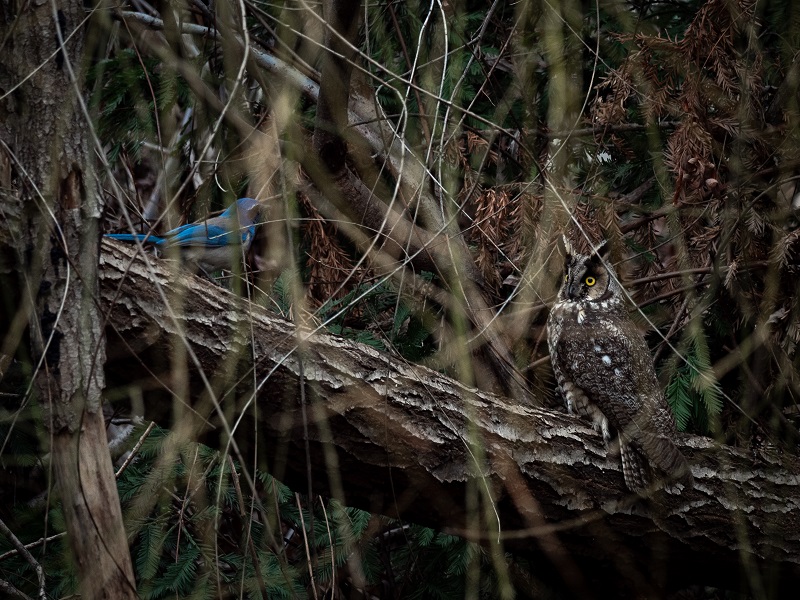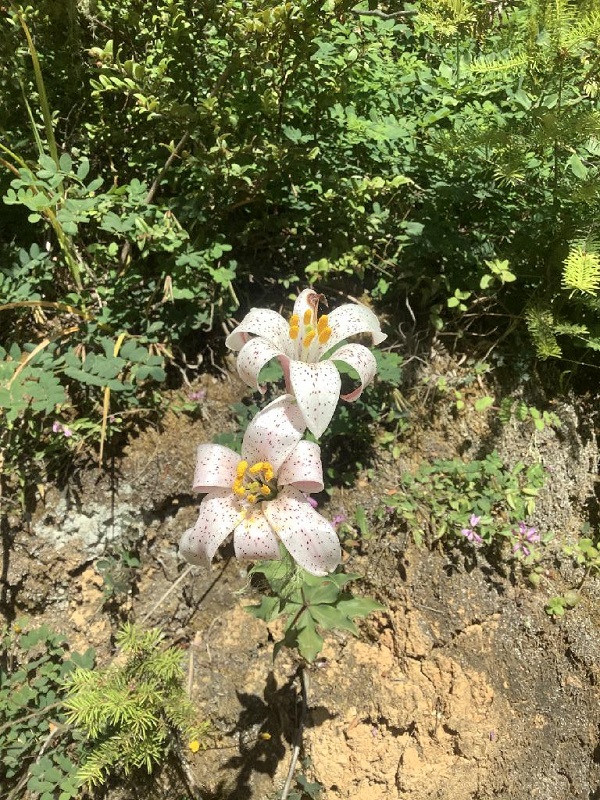
Asio otus – long-eared owl
Submitted by Zachary Cava
This amazing photo was taken by Zachary Cava when a long-eared owl was spotted being mobbed by several scrub jays in Butte County. This mobbing behavior often occurs when smaller birds try to protect themselves, their nests, or their territory from larger predatory birds. The targeted bird may sit and tolerate the attack for a little while, but if it continues on it will fly away from the area.
Long-eared owls have an extensive range across many states and are a Bird Species of Special Concern in California. They utilize densely wooded areas for nesting and roosting and are known to nest in the old nests of crows and hawks. Long-eared owls primarily hunt at night by flying low over fields, meadows, and other open areas. These animals have remarkable hearing due to their asymmetrical ear openings and large facial disks that help catch sound, making them extremely precise hunters even in pitch black. Due to its nocturnal nature and camouflaged coloration, this species is tough to find for many birders and researchers. With that being said, a huge thank you to Zachary for capturing such a beautiful picture of this interesting species interaction!

Lilium rubescens – redwood lily
Submitted by Miles Hartnett
This great find was photographed by Miles Hartnett in Mendocino County. The redwood lily is an uncommon species found in northwestern California and is currently a California Rare Plant Rank 4.2 species (plants of limited distribution; fairly threatened in California). Historically, this species was also known to be found in southern Oregon but has since been thought to be extirpated from that state. It is most threatened by development, logging, and competition from invasive species.
The redwood lily is a perennial that showcases six white to pale-purple petals with red freckled spotting. It originates from a bulb and has a waxy stem that can grow up to two meters in height with oval shaped leaves arranged in whorls. It generally grows in forest understories or chaparral habitats, making it both shade and low-water tolerant. This lily’s beautiful blooms can be found from April through August. Much thanks to Miles for sharing this photo of such a beautiful and rare species!
Do you have some great photos of rare plants or wildlife detections? Submit them along with your findings through our Online Field Survey Form and see if your photos get showcased!